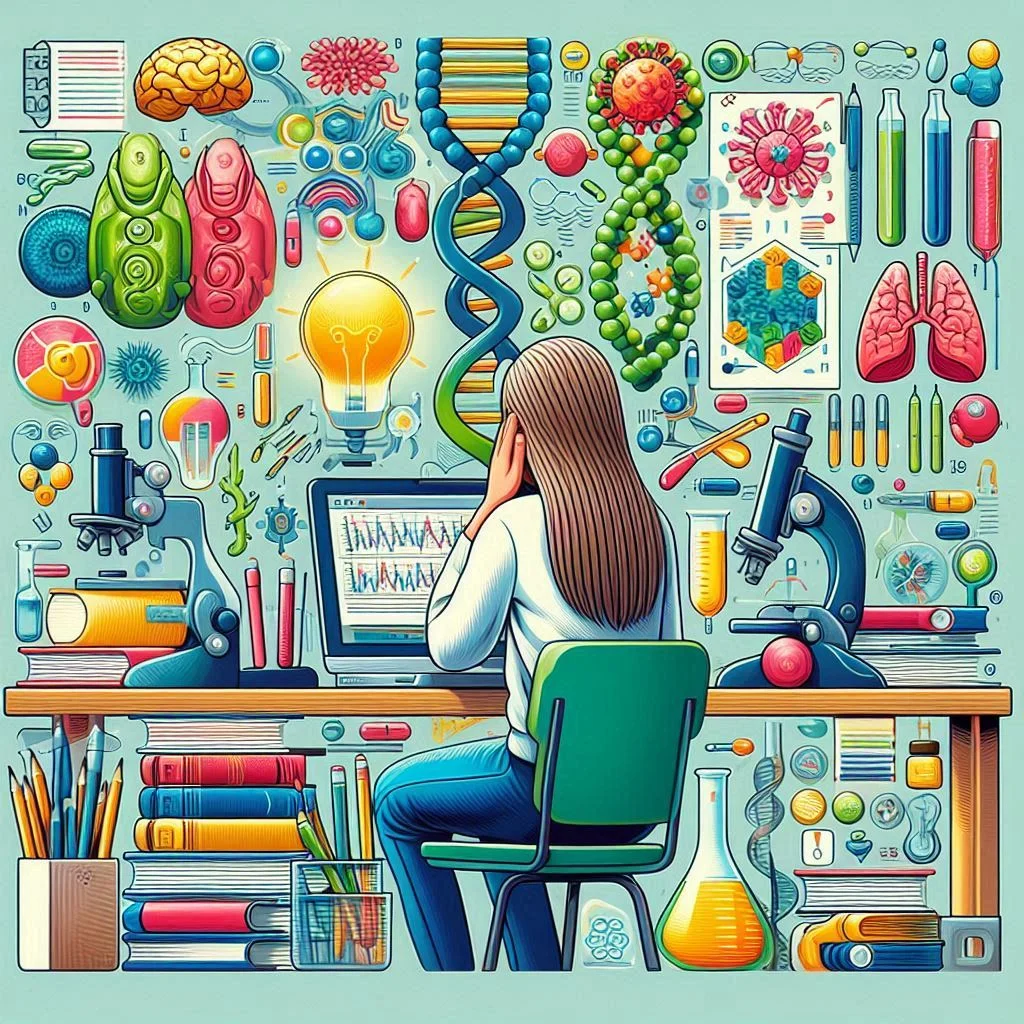Helping University Students Tackle Life Sciences Assignments: A Comprehensive Guide

Understanding the fundamental principles of life sciences is crucial for students pursuing biology and related fields. Tackling biology assignment effectively requires a blend of theoretical knowledge, critical thinking, and practical application. In this blog, we will walk you through strategies to answer review and critical thinking questions on topics ranging from the origins of life to the principles of biological organization.
The First Forms of Life
The earliest forms of life on Earth were microorganisms, specifically prokaryotes like bacteria, which appeared around 3.5 billion years ago. These microorganisms laid the foundation for the evolution of more complex life forms. Unlike plants, birds, or dinosaurs, which came much later, these microorganisms were able to thrive in the primordial conditions of early Earth, making them the pioneers of life.
Hypothesis Definition
In scientific inquiry, a hypothesis is a suggested and testable explanation for an event or phenomenon. It serves as a starting point for investigation, allowing researchers to make predictions that can be tested through experimentation and observation. Understanding the concept of a hypothesis is essential for developing a scientific approach to problem-solving.

Natural Sciences
Natural sciences encompass disciplines that study the natural world, such as biology, astronomy, and physics. These sciences focus on understanding the physical universe and its processes. However, fields like computer science, while scientific and technical, do not fall under the category of natural sciences as they deal primarily with computation, algorithms, and information systems.
Inductive Reasoning
Inductive reasoning involves drawing general conclusions from specific observations. This type of logical thinking is fundamental in forming hypotheses and theories in science. By observing patterns and making connections, scientists use inductive reasoning to build broader understandings of natural phenomena.
Ensuring Research Quality
The peer review process is vital in scientific research as it ensures that a scientist's work is original, significant, logical, and thorough. Before publication, research is evaluated by other experts in the field to verify its validity and quality. This process helps maintain the integrity and reliability of scientific literature.
Reasoning in Observations
Observing that houseplants exposed to music grow more quickly than those in rooms without music exemplifies inductive reasoning. From specific observations, one can infer a general conclusion about the effect of music on plant growth. This type of reasoning is crucial in forming hypotheses that can be further tested through controlled experiments.
The Cell: Basic Unit of Life
The cell is the smallest unit of biological structure that meets the functional requirements of "living." It carries out essential life functions such as metabolism, growth, and reproduction. Understanding cellular biology is fundamental in life sciences, as cells are the building blocks of all living organisms.
Characteristics of Viruses
Viruses are not considered living organisms because they lack cellular structure and cannot carry out metabolic processes independently. They require a host cell to reproduce and function, which distinguishes them from living organisms that can perform these functions on their own.
Eukaryotic Cells
Eukaryotic cells are characterized by the presence of a membrane-enclosed nucleus, a key feature that differentiates them from prokaryotic cells. This structural distinction is crucial in understanding the complexity and functionality of different cell types in living organisms.
Population Definition
A population consists of a group of individuals of the same species living in a specific geographical area, interacting, and interbreeding. Understanding population dynamics is essential in ecology, as it helps explain how species interact with each other and their environment.
Hierarchy of Biological Organization
The hierarchy of biological organization ranges from the most inclusive level, the biosphere, to the least complex level, the organism. This sequence—biosphere, ecosystem, community, population, and organism—helps scientists understand the different levels at which life is structured and how each level interacts with the others.
Phylogenetic Tree
In a phylogenetic tree, the organisms that have evolved most recently are typically found at the tips of the branches. This representation helps scientists trace the evolutionary relationships between species and understand their common ancestry.
Applying the Scientific Method
The scientific method is not only used in the sciences but can also be applied to everyday situations. For example, if your car won't start, you can use the scientific method to diagnose and solve the problem:
- Problem: Your car won't start.
- Observation: The car was running fine yesterday.
- Hypothesis: The car battery might be dead.
- Experiment: Check the battery voltage with a multimeter.
- Conclusion: If the battery voltage is low, replace or recharge the battery and see if the car starts.
Applied Science in Daily Life
Applied science has a direct effect on our daily lives in numerous ways. One example is the development of smartphones, which combine advancements in computer science, materials science, and electrical engineering to create versatile tools that impact communication, work, and entertainment.
Topics in Biology and Beyond
Biologists study a wide range of topics, such as genetics and ecology, which focus on the mechanisms of life and interactions within ecosystems. In contrast, fields like quantum physics and civil engineering fall outside the realm of biology as they focus on the fundamental principles of matter and the design and construction of infrastructure, respectively.
Basic and Applied Science Questions on Cancer
Research on cancer involves both basic and applied science questions. For instance:
- Basic Science Question: What genetic mutations are associated with the development of breast cancer?
- Applied Science Question: How can targeted gene therapy be used to treat breast cancer patients?
These questions guide researchers in understanding the underlying mechanisms of cancer and developing effective treatments.
Defining Life
To consider an organism "alive," biologists agree on several criteria, such as the ability to reproduce and undergo metabolism. For example, while a fire can spread and grow, it is not alive because it lacks cellular structure. Similarly, a car engine converts fuel into energy, mimicking metabolism, but it is not considered alive.
Levels of Biological Organization
The levels of biological organization range from the smallest to the most encompassing. Here is the order: hydrogen atom, water molecule, skin cell, liver, wolf pack, elephant, tropical rainforest, and planet Earth. This sequence helps illustrate the complexity and interconnectivity of life forms and their environments.
Homeostasis Example
Homeostasis is the process by which organisms maintain a stable internal environment. For instance, when you go for a long walk on a hot day, sweating helps regulate your body temperature. As sweat evaporates from the skin, it cools the body down, maintaining a stable internal temperature.
Studying Biology from Microscopic to Global Approaches
Biology can be studied from various perspectives, ranging from the microscopic to the global scale. For example, researchers might use microscopy to study the structure and function of cells, while others might investigate the impact of climate change on biodiversity and ecosystems worldwide. These approaches provide a comprehensive understanding of life at all levels.
By understanding these foundational concepts and employing critical thinking, students can enhance their ability to tackle life sciences assignments effectively. Remember, practice and curiosity are key to mastering any subject.